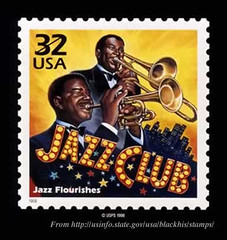Questions
1.Roughly how much of London's story is devoted to describing the setting? What particular details make it memorable?
2.To what extent does setting determine what happens in this story?
3.From what point of view is London's story told?
4.In "To Build a Fire" the man is never given a name. What is the effect of his being called simply "the man" throughout the story?
5.From the evidence London gives us, what stages are involved in the process of freezing to death? What does the story gain from London's detailed account of the man's experience with each successive stage?
6.What are the most serious mistakes the man makes? To what factors do you attribute these errors?
相關連結
To Build a Fire原文
http://en.wikisource.org/wiki/To_Build_a_Fire
To Build a Fire 朗讀mp3檔 from LibriVox(mp3@64kbps - 19.2MB)
http://librivox.org/short-story-collection-003/
Jack London作品集(from WIKISOURCE)
http://en.wikisource.org/wiki/Author:Jack_London
To Build a Fire:Plot Summary (Read the original story first. Trust me. The summary is not much shorter than the story itself.)
http://en.wikipedia.org/wiki/To_Build_a_Fire
2007年10月31日 星期三
"To Build a Fire" by Jack London
2007年10月21日 星期日
"A & P" by John Updike
-character
-setting of time,place
season or month: like summer or July
location: A&P supermarket
-plot
-narration
tone: serious, humorous, ironic, sincere
1st person point of view :provide the narrowest point of view
This story is all Sammy's observation and assumption(guesses).
He also judged.
the narrator: Sammy
-the observant
-imaginative
-prejudiced
-sense of beauty
-sense of justice
-guts
exposition:
expose: to explore
to provide details of background
characters
gap between cultural or social classes
characters(characteristics)
-Sammy
Age: 19
job: cashier
personality: passionate, thoughtless,
action he took:
-Lengel
Age: maybe fourty something
job: manager
personality: stubborn,religious,pious,propriety, conservative,meticulous,serious
action he took: humiliated the three girls
-Stokesie
Age: 22 and married
job: cashier
personality:
prospect: One day he would be a manager.
-3 ladys
-other customers
'sheep',housewives,
house-slaves:narrow-minded
symbols
"Sammy" name on the apron<-----------------------> identity
"A&P" is an initiation story, a story of growth(gaining maturity)
We look at the whole thing through Sammy's eyes.
(first person narration, by first person narrator)
If this story were written by 3rd person point of view,it will be more objective
Differences from Different Point of View
1st :what, how
3rd:what, how, why
2007年10月14日 星期日
Sonny's Blues by James Baldwin 1(Introductoin)

Introduction
Frequently anthologized, James Baldwin's "Sonny's Blues" tells the story of two brothers who come to understand each other. More specifically, it highlights, through its two main characters, the two sides of the African-American experience. The narrator has assimilated into white society as much as possible but still feels the pain of institutional racism and the limits placed upon his opportunity. Conversely, Sonny has never tried to assimilate and must find an outlet for the deep pain and suffering that his status as permanent outsider confers upon him. Sonny channels his suffering into music, especially bebop jazz and the blues, forms developed by African-American musicians. "Sonny's Blues" was first published in 1957 and was collected in Baldwin's 1965 book, Going to Meet the Man.
The story also has biblical implications. Baldwin became a street preacher early in his life, and religious themes appear throughout his writings. In "Sonny's Blues," Baldwin uses the image from the book of Isaiah of the "cup of trembling" to symbolize the suffering and trouble that Sonny has experienced in his life. At the end of the story, while Sonny is playing the piano, Sonny's brother watches a barmaid bring a glass of Scotch and milk to the piano, which "glowed and shook above my brother's head like the very cup of trembling." As Sonny plays, the cup reminds his brother of all of the suffering that both he and Sonny have endured. His brother finally understands that it is through music that Sonny is able to turn his suffering into something worthwhile.
Summary
Two brothers--->two sides of the African-American experience
Narrator--->assimilated into white society
still feels the pain of institutional racism
limits placed upon his opportunity
Sonny ------>never tried to assimilate
must find an outlet for the deep pain and suffering
permanent outsider
Through Sonny's music------>Two brothers come to understand each other.
Bibliography and Further Reading
Bibliography of James Baldwin from Wikipedia
James Baldwin (writer)
One good article in Chinese the writer cited "Sonny's Blues" to express her own feeling
Sonny's Blues/〈薩尼的藍調〉之手足情感
For the Jazz and Literature Unit of Literature and Social History from UC Davis
An AP Class in English Literature
The Lottery by Shirley Jackson
"The Lottery"
by Shirley Jackson(1919-1965)
Structure: I . Preparation
II . the Lottery
III. the Result
What does the word "Lottery" mean?
Origonal : a money game
In this story: 'Lottery in June, Corn be heavy soon.' indicates this tradition is
for a rich harvest.
A tradition, uncivil, cruel,
Individual right is going to be sacrificed for collective good?!
A chosen one will become the scapegoat, the victim.
A woman, a villager, a neighbor, a friend of other villager was
stoned to death.
ironic,sarcastic
The writer was using a harsh tone to question human nature. Why people keep
foolish tradition without thinking.
Setting
time : modern time, the villagers were already using tractors. summer June 27th
place : some anonymous small village. Most people make a living by agriculture.
It's a universal story: it could happen at any time ,any place
Try to describe how Shirley Jackson pave the story.
People prey to the goddess Demeter to earn her blessing.
I .Preparation of the lottery
atmosphere: tension, anxiety
gathering: children: boys, girls
adults : men, women
some names distinguished (these names are quite symbolic)
Bobby Martin
Harry Jones
Dickie Delacroix: of the cross, pious, religious
Mr. Summers: host ->who conducts the ceremory
Mr. Graves
Old man Warner: gives warnings, reminder
the Hutchinsons: a martyr
the Adams: first sinner
square is a place for social activities
Black wooden box------>tradition
color symbolism
shape: shabby
it suggested a coffin
details of the further preparation
count heads ------------->households
families
incident: Mrs. Hutchinson came late hurriedly.
dramatic irony
"You're in time." is a dramatic ironic line of this story.
Mrs. Hutchinson is in time for death, sacrifice.
And It count the villagers from A to Z in sequence. No one was excepted.
Can we call this lottery democratic ?
Listen to
NBC Short Story, NBC radio, 1951
2007年10月7日 星期日
Everyday Use by Alice Walker
Structure
1.Preparation for Dee's homecoming
2.Dee's visit
3.Dee left; after Dee Departed
Setting: at first the atmosphere was pleasant
the surroundings were friendly,peaceful,harmonious
structure
-beginning
-middle development
-end
waiting -prepartion
living room: to welcome guests, receiving
separation for a long time
a foil: a minor character, similar to the protagonist in age, ...and in many aspects of background.
character
Mother: Nameless,sacrifice,protect,unconditioned love,raise the daughters, patience
labor class, colored, blur collar
Dee: confident,aggressive,have no contribution to the family
Maggie:
Waiting for Dee's homecoming
Maggie :nurvous
The Mother: recalling the TV show she'd saw
make believe
TV shows: reunion, endearing (she tried to make believe, )
illusion <-----------------------------> reality
one foot raise in flight: ready to run
enveloped: wraped
lame: cripple
grade - for elementary school
year - high school
college- freshman, sophomore, junior, senior
/---- Dee: to force word
/ to torture
reading to show off
\
\---- Maggie:pleasant
1st house was burned down 10-12 years ago. It's shabby, tacky
Dee wanted to cut off the connection with her family.
people's name: identity, background
change one's name: denial to the old name
want a new identity
Dee -----> Hakim Abarber: a long name suggests Dee wanted to be important
Dee was a family name. continuity
trip over: walking through many obstacles
a blue streak: a lot of praises
Civil War(1861-1865)
churn-------->everyday use
quilt---------->protection also for everyday use
Dee ---> rich ---> decoration
selfish,self-centered
Climax: Mother felt like hit by the thunder and realized how nice maggie was.
true awareness, enlightenment, illumination
Ending:
Mother and Maggie enjoyed their yard and restored harmony.
How "Everyday Use" functions as an initialion story: a process, how a person grow up
---->awareness---------------------------------->more mature recognition
through Dee's home-coming and the event occured,
mother and Maggie had a groth, an inspiration.
